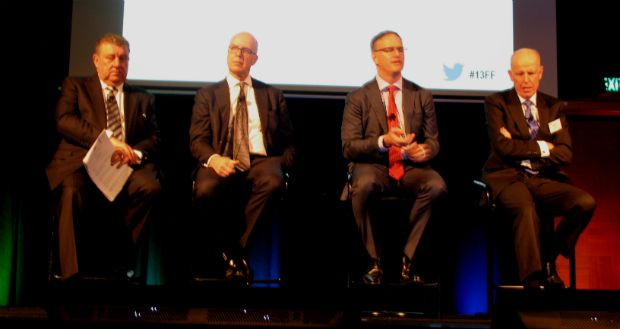
Yogi Berra died recently. He was 90 years old, and a quintessential American. He served in the US Navy in World War II and took part in the D-Day Invasion. He played 19 seasons of Major League Baseball, 18 of them as an All-Star, and 10 of them as a World Series Champion. He was a baseball personality throughout the rest of his life.
But Yogi was more than a baseball personality. He is one of the most often quoted individuals in American culture, which is all the more remarkable considering that he quit school after the eighth grade. The things he said were often, well, interesting.For example: "It’s déjà vu all over again. When you come to a fork in the road, take it.Nobody goes there anymore, it’s too crowded."
Yogi has been quoted by everyone from politicians to printing sales trainers —which is why I am writing about him today. I have used two examples of Yogi-wisdom in my seminars over the years, and I want to share them with you.
By watching
Yogi once said: "You can observe a lot by watching." In my experience, most printing salespeople do not pay enough attention when they speak with printing buyers. They do not watch, so they miss visual cues. They do not listen, so they miss other critical information.
I was on a sales call with one of my clients a few weeks ago, and he was totally engrossed in making his presentation. He had a PowerPoint show on his iPad and a thick sheaf of samples. I watched the buyer pretty intently over a period of 4-5 minutes as he went from interested and listening to obviously thinking about something else. Since my client showed no sign of stopping, I asked him to do just that, and then I said to the prospect, “It looks to me like we have lost your attention. Can we reboot or should we get lost?”
He laughed, and then apologised, saying that he had a lot on his mind. He promised to try harder to stay engaged, and the conversation continued.
As we were walking out to the car 15 minutes later, my client said: “You embarrassed me in there.” I said, “But you ended up accomplishing a lot more than you would have if you had just kept talking. I saw something that you could have seen, but you were not watching. You were talking and he was not listening. That is not very good selling.”
Here is a more positive story. I watched another client recently as he did pick up on a visual cue. He was showing a sample and noticed that his prospect was actually looking at another sample in his briefcase. He switched gears immediately, setting the first sample aside as he said, “I can see that you have some interest in this. Tell me more.” That took the conversation in a very productive direction.
Until it’s over
Yogi also said, "It ain’t over till it’s over." Here is how that applies to printing sales. Most salespeople think that a quote or bid is lost when the buyer gives the order to another printer. I will grant you that a battle is lost at that point, but not the war.
When you ask printing buyers to name the factors they consider in awarding a project, the most common answers are quality, service, price, and trust. Please think about what that really means. Printing buyers compare price, and then consider whether they trust the printing salesperson and the printing company to deliver on their promises of quality and service. If they do deliver, the buyer is inclined to buy from that printer again, and very possibly will do so even if that printer does not offer the lowest price. If they do not deliver, the buyer may be inclined to buy from a different printer next time, even if that different printer does not offer the lowest price.
I have found that most buyers will pay what they have to pay in order to get what they really want or need. Note the words have to, because that is where the biggest disconnect in selling usually occurs. Printing buyers do not always know how much it must cost to get what they really want or need. They do know how to compare prices, and buy from the lowest one. The point here is that even if you lose a bid, the larger competition for that buyer’s long-term business is not necessarily over. The key is that you must look into their level of satisfaction with what they bought from your competitor.
If the other printer met or exceeded their expectations, you will have a hard time breaking in. But if they did not, that is a whole new ballgame.
Comment below to have your say on this story.
If you have a news story or tip-off, get in touch at editorial@sprinter.com.au.
Sign up to the Sprinter newsletter



